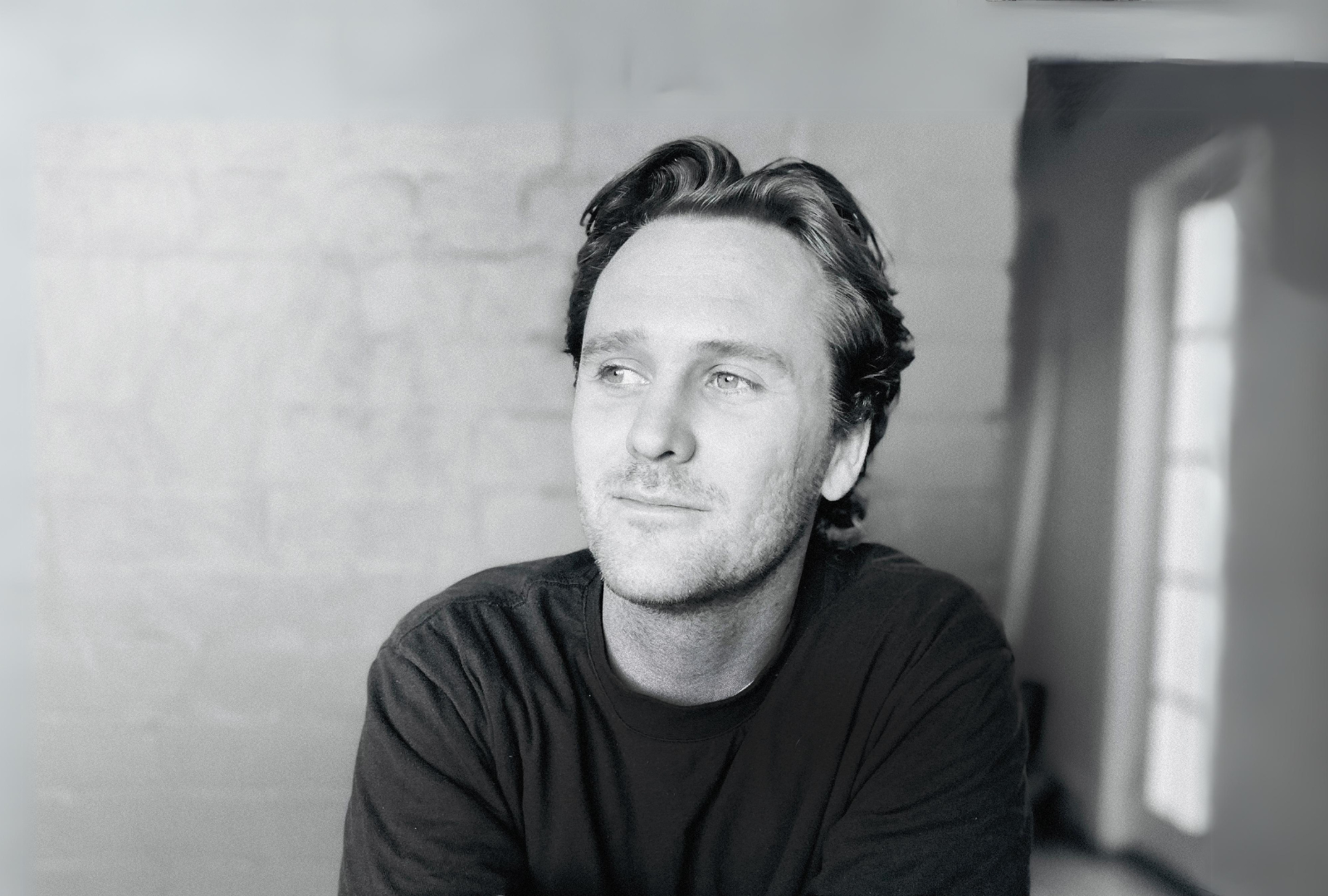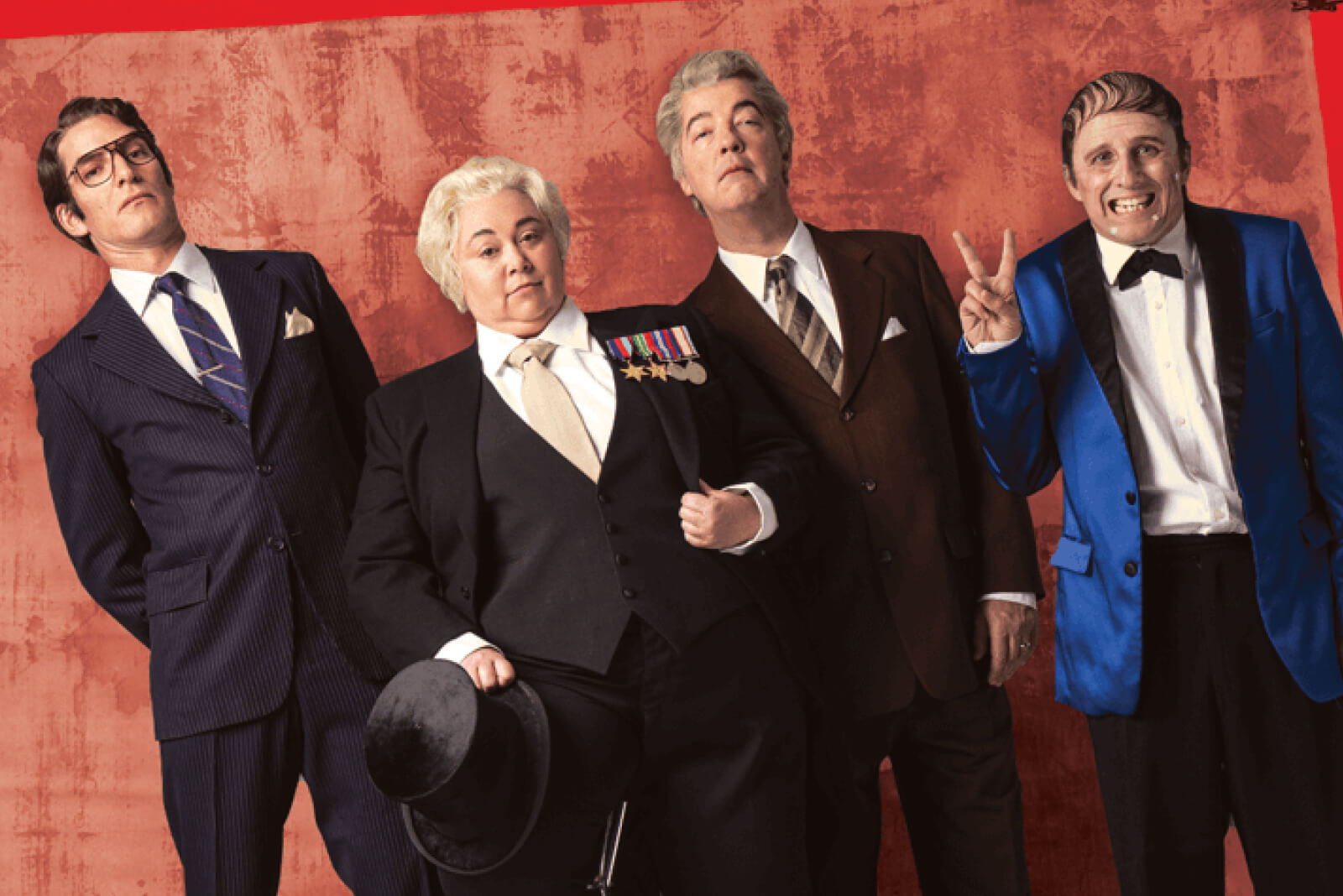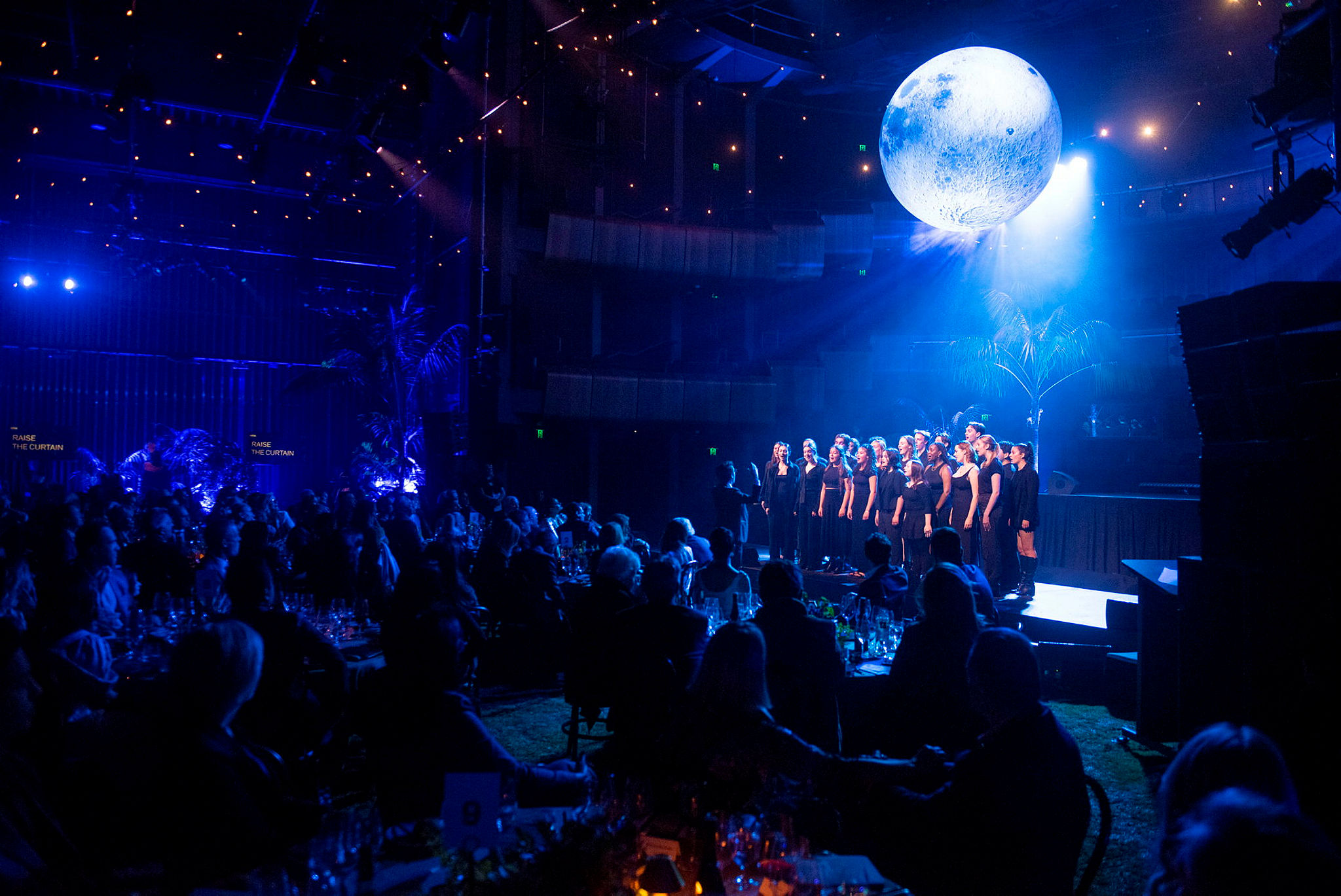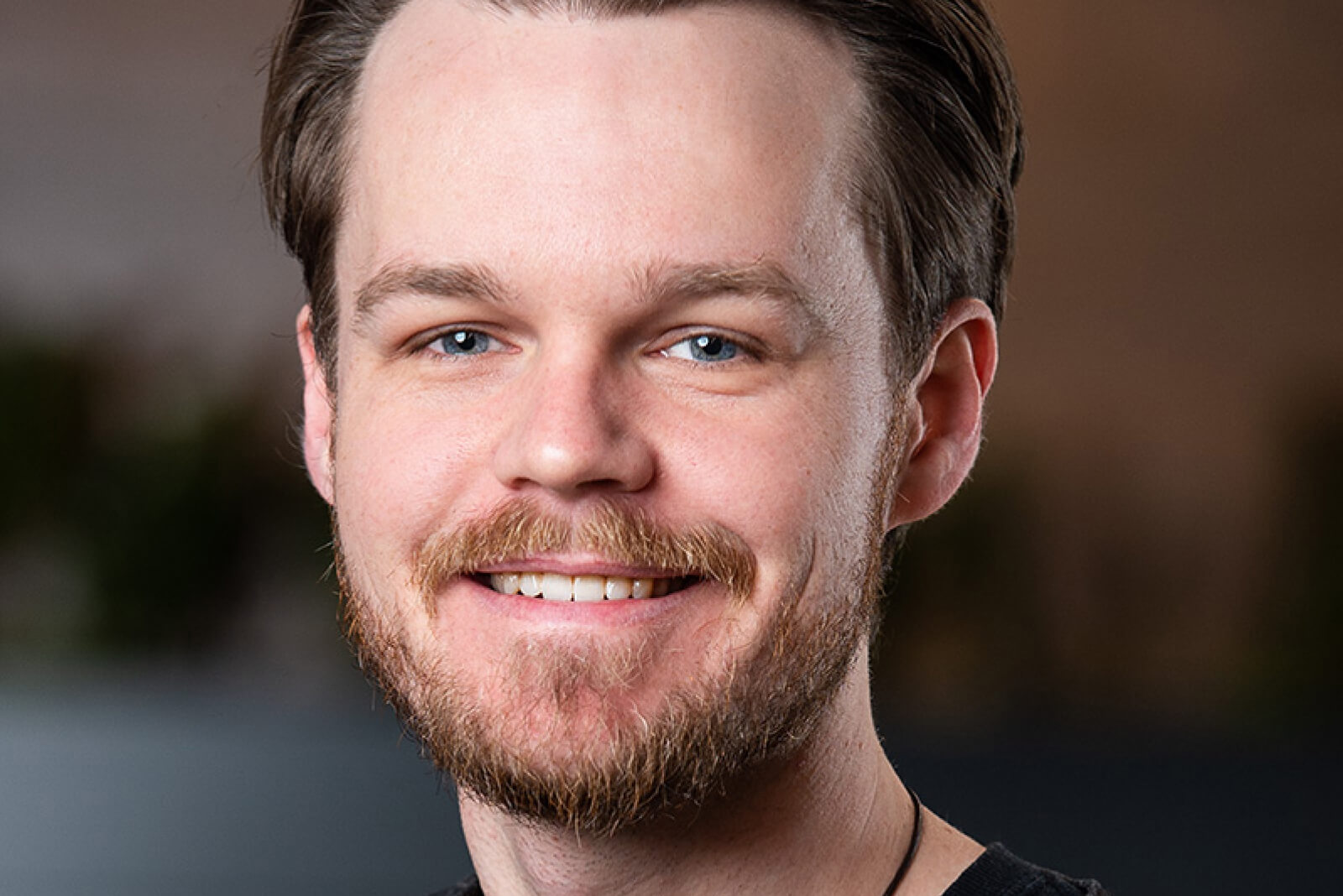NIDA Alumnus Hayden Relf: Collaboration and Designing for Live Performance
NIDA alumnus, Hayden Relf (Bachelor of Fine Arts, Design for Performance, 2021), shines as a multifaceted creative whose career path has led him to experiment with innovative new technologies, finding exciting ways to play with spatial storytelling in live theatre. In this interview, we delve into Hayden’s transformative journey and the impact NIDA has had in helping him navigate the twists, turns and unexpected detours found in the creative arts industry.
Have you always wanted to pursue a creative career and what inspired you to go down the path of design?
Growing up, I was into art and I have always done creative things for work but deep down I have always been terrified of considering myself an artist or even calling myself a creative person. I dropped out of art school and went travelling a bit, did some random jobs, and then fell into working for a music festival up on the coast. That job kind of snowballed, it was a great learning experience, I had to lead and assemble a big team and work with a tight budget. I learnt a lot working on the fly and in this job, I had this realisation of how much I loved collaborating with creative people and designing spaces for performance.
As for going down a design path specifically, my old man was a draughtsman for the Sydney Waterboard back in the day, he was also a builder and loved architecture. When I was around 8 years old, Dad and I used to spend Saturday mornings drawing out plans on his graph paper of how we would renovate the house, building extensions to the family home. It took me a long time to be able to articulate and see what it was that I wanted my career to look like — even to understand what that dream job even was, but it’s also been a natural progression. I think through all the random jobs along the way I picked up a range of different skills, then going to NIDA and working with the people I have since leaving, the past few years have felt like they’ve been building toward something, and thankfully I’m now on a path to pursue a career that I love. The fact that it’s creative is just a bonus.
Can you tell us why you chose to do the BFA (Design for Performance) at NIDA?
I wanted a career pivot, and at the time when I applied, I was working on music festivals. It was a job I really kind of fell into and truly, I was winging it most of the time. I had no solid training or skills, which is why I decided to apply for NIDA. I hunted for a long time for the right course. I applied to NIDA because the design course was broad and has produced some of Australia's best production designers, arguably some of the best designers globally.
What are some of your highlights from studying at NIDA?
In my final year at NIDA, I had the privilege of working with director Kate Champion and writer Hilary Bell on a show called Perfect Stranger. We threw a 10-metre revolve upstairs in the Space theatre and put our audience on it. It wasn’t a particularly flashy design aesthetically (all the photos of the space look like a black box theatre), but the audience's experience was the design. The way we set up the space served the dramaturgy of the play well and helped Kate create the show and tell the story. Making that show was a real challenge, but all things worth doing should be a bit of hard work, and Kate is a brilliant director — an incredible creative and very generous with her time. She taught me a lot. Our collaboration was really special because while working on Perfect Stranger, I realised how much I love devising work and designing in a rehearsal room. It’s shaped a lot of how I want to practise when designing for live performance.

Hotel performed at NIDA, 2022. Set and Costume Design by Hayden Relf. Photo by Lisa Maree Williams.
What would you say are the biggest differences in designing for theatre compared to film?
They are so different. They have a similar process at the beginning and a lot of the same elements along the way; breaking down a script, research, working with collaborators, etc. But they are completely different forms and they both have specific challenges.
There is a deep understanding of text that you get from learning to design for theatre and it's a skill to develop being able to read a play and figure out what the absolute bare-bone elements are that I need to make it work. Generally speaking, theatre is a lot more abstract and conceptual. It isn’t about making things look pretty — it is creating the world for the text to come to life within, and to help create opportunities for a director to create interesting images on stage to tell the story. I would like to approach designing films the way I do when I start working on a theatre show. One thing I know when I design for theatre is that I love being in a rehearsal room with the directors and actors. I have a project on the back burner the moment that’s in development, but the team got together in a rehearsal space for a development with the actors and we got to try out a few different versions of the design ideas I had. It's a really enjoyable way to design within the room because now I can go away and develop the work more so that next time we’re together in a rehearsal room the design will be much more resolved. I think having time to workshop projects with your collaborators as early as possible is really important.
Since graduating, can you share a project you are most proud of and one you have found the most challenging?
One project that has a big place in my heart is Collapsible, which was a show we put on in the Old Fitz theatre at the beginning of last year, starring the amazingly talented and all-round wonder woman Janet Anderson. Collapsible was on the back burner for a few years — we did our first read-through of the script in 2019. The team was made up of all NIDA alumni, some of my favourite humans and some of the most talented people I know — the directors were Zoe Hollyoak and Morgan Moroney. It was an ambitious show — we were using live motion capture on stage and experimenting with the form using live cinema elements all while working with hardly any budget. I am so proud of that show; the whole team put everything we had into it. I even spent a few nights sleeping in the pews of the theatre for an hour or two to get the set bumped in. I think every challenge that came up the way was navigated as a team; Zoe, Janet, Morgan, Daniel (Herten) and I all worked together as co-creators. Sure, we had our own department we were in charge of, but we also worked collaboratively to devise the work.

Janet Anderson in Collapsible at Old Fitz, 2022. Set Design by Hayden Relf.
Can you please take us through what your role is on the series The Narrow Road to the Deep North?
On Narrow Road I am working as Design Assistant, working with our production designer Alice Babidge and Paul Sarpi (Design Associate). My role has changed and evolved from when I started. Originally, I thought I would be on for a few weeks to help Sarpi put together some design documents to help inform the rest of the Art department. Basically, my job description was to know everything about every location and help communicate Alice and Paul’s vision to the various departments within the art department; scenic, graphics, props, set dec, greens, etc. I jumped at the chance to be a part of Alice’s team, regardless of what the role was. I have been on set a lot as their eyes and ears when they couldn’t be there and at the start of this year I was based down on the south coast helping oversee the build of one of our larger sets, working with construction, greens and scenic departments to help make sure Alice’s vision for the set was achieved. I’ve learnt so much on this job. It's bittersweet knowing we wrap filming at the end of this week.
What’s next for you?
Well, this week we’re about to wrap filming on Narrow Road, so I am planning on catching up on some much-needed sleep. For the rest of this year, my focus will be to take on as many film projects as I can. I do have a deep love for making theatre and I have one theatre project I am working on, but we’re still in the development stage of it so that will be a while off before we can talk about it.
I have a short film that we have been grading all weekend and we are about to release in the next few days. Shooting another short in a few months, my goal is to keep working and making as much as possible. I am trying hard to strike a balance with doing the smaller indie jobs that I get to have more creative control over and design myself and the bigger jobs where I am part of an art department.




